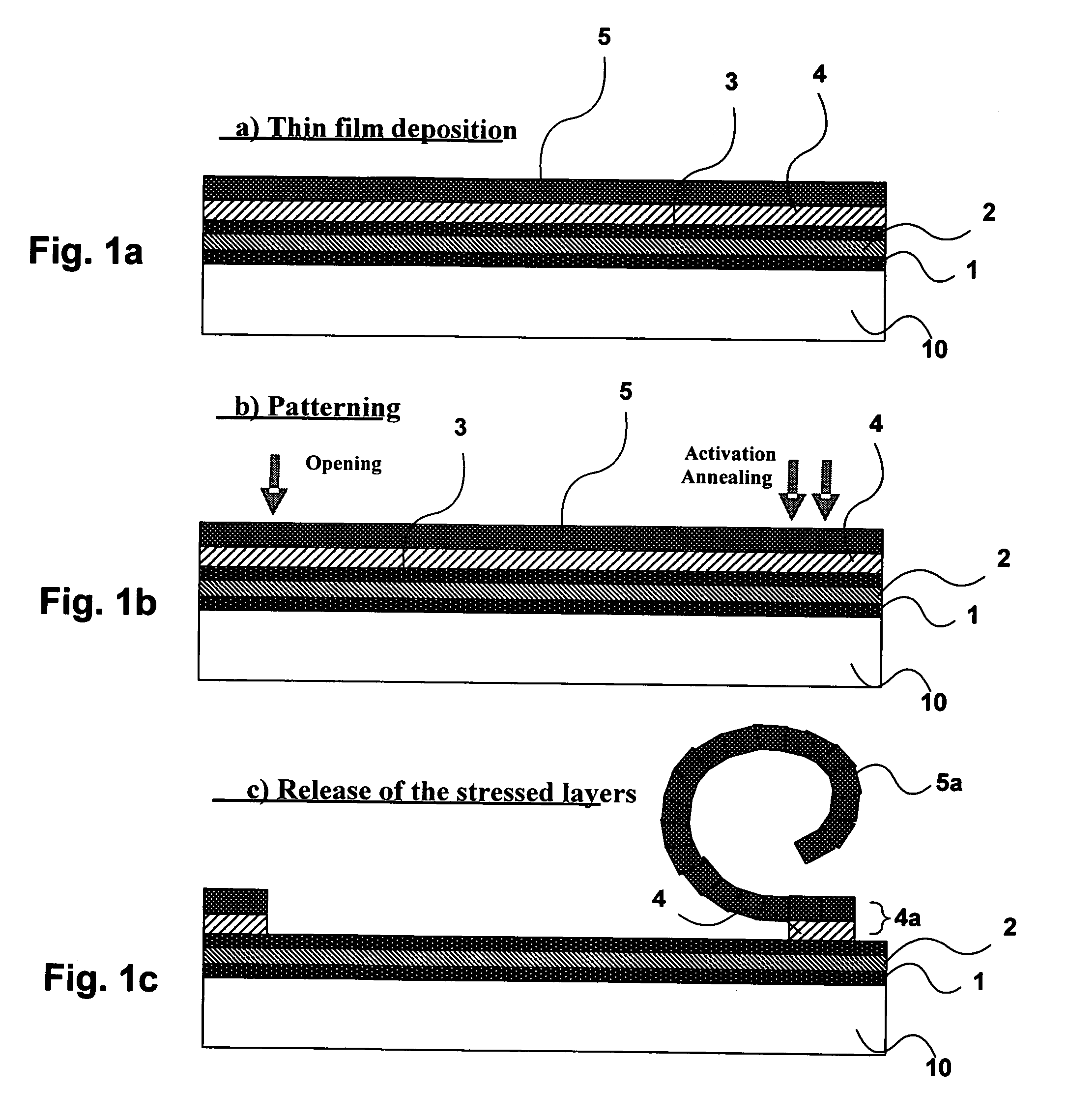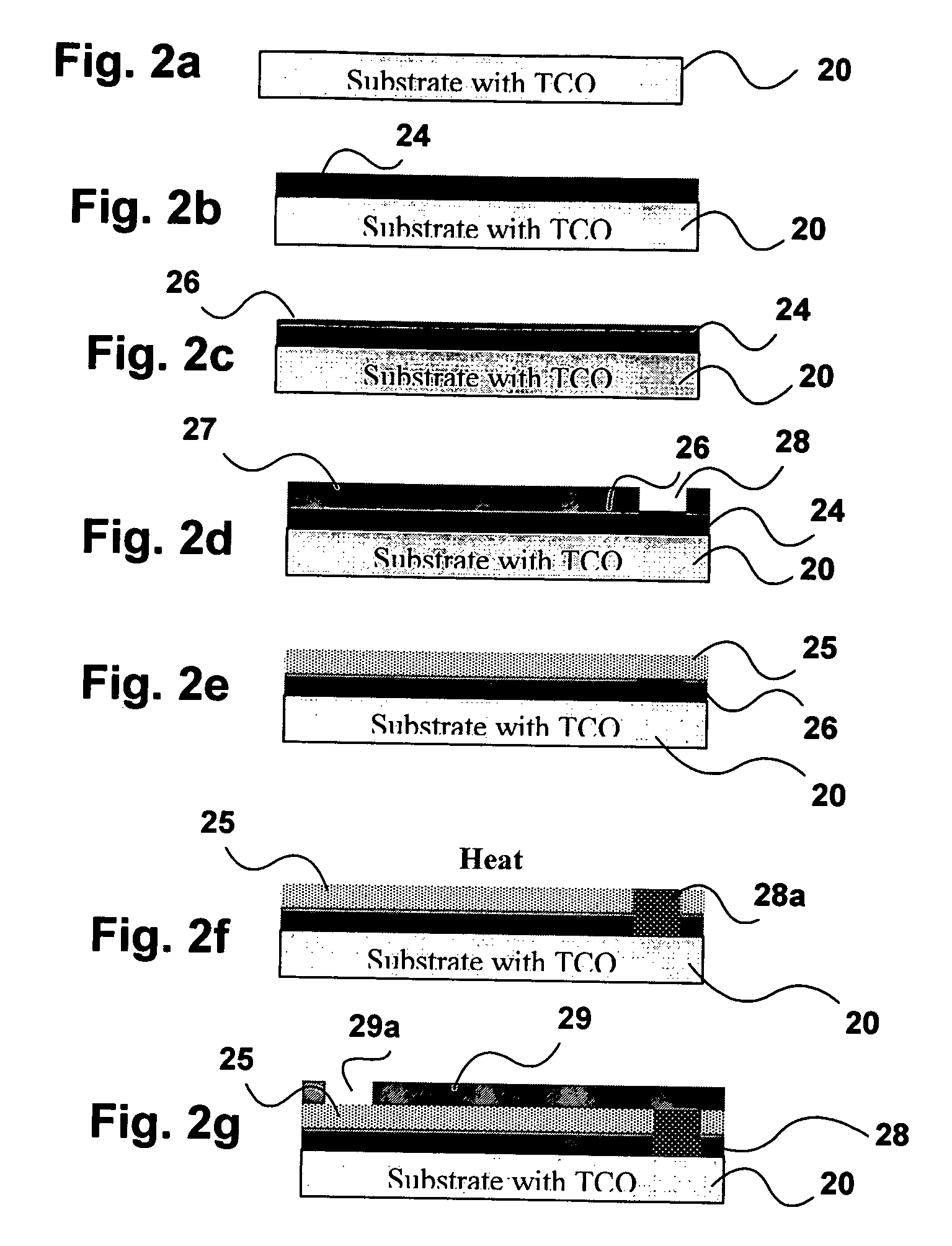Microblinds and a method of fabrication thereof
a technology of micro-blinds and fabrication methods, applied in the field of light transmission control, can solve the problems of macro-blinds with very severe drawbacks such as cost, reliability, visual appearance, and current smart window technology, and achieve the effect of major energy saving in heating and cooling costs and better comfort for the occupants
- Summary
- Abstract
- Description
- Claims
- Application Information
AI Technical Summary
Benefits of technology
Problems solved by technology
Method used
Image
Examples
Embodiment Construction
[0023]FIGS. 1a to 1c are cross-sectional views of the microblinds showing the three major fabrication steps: deposition of the thin films with a controlled stress, patterning and then release of the stressed layers. The various layer numbers are defined as a substrate 10, an insulator, a diffusion barrier and / or adhesion promoter layer 1; a transparent conducting layer 2; an insulator layer 3; a release-sacrificial-anchoring layer 4; and a reflective, resilient and stressed layer 5. The stressed layer 5 may comprise a plurality of sublayers.
[0024]The fabrication process consists of depositing and patterning a number of layers on a clean substrate. The substrate is preferably glass but any substrate substantially transparent in the visible spectrum may also be used, including plastic foils. The process optionally comprises the deposition of a diffusion barrier, adhesion promoter and insulator layer 1 on the substrate 10, which may be a window pane, an illuminated panel, or a supporti...
PUM
 Login to View More
Login to View More Abstract
Description
Claims
Application Information
 Login to View More
Login to View More - R&D
- Intellectual Property
- Life Sciences
- Materials
- Tech Scout
- Unparalleled Data Quality
- Higher Quality Content
- 60% Fewer Hallucinations
Browse by: Latest US Patents, China's latest patents, Technical Efficacy Thesaurus, Application Domain, Technology Topic, Popular Technical Reports.
© 2025 PatSnap. All rights reserved.Legal|Privacy policy|Modern Slavery Act Transparency Statement|Sitemap|About US| Contact US: help@patsnap.com



